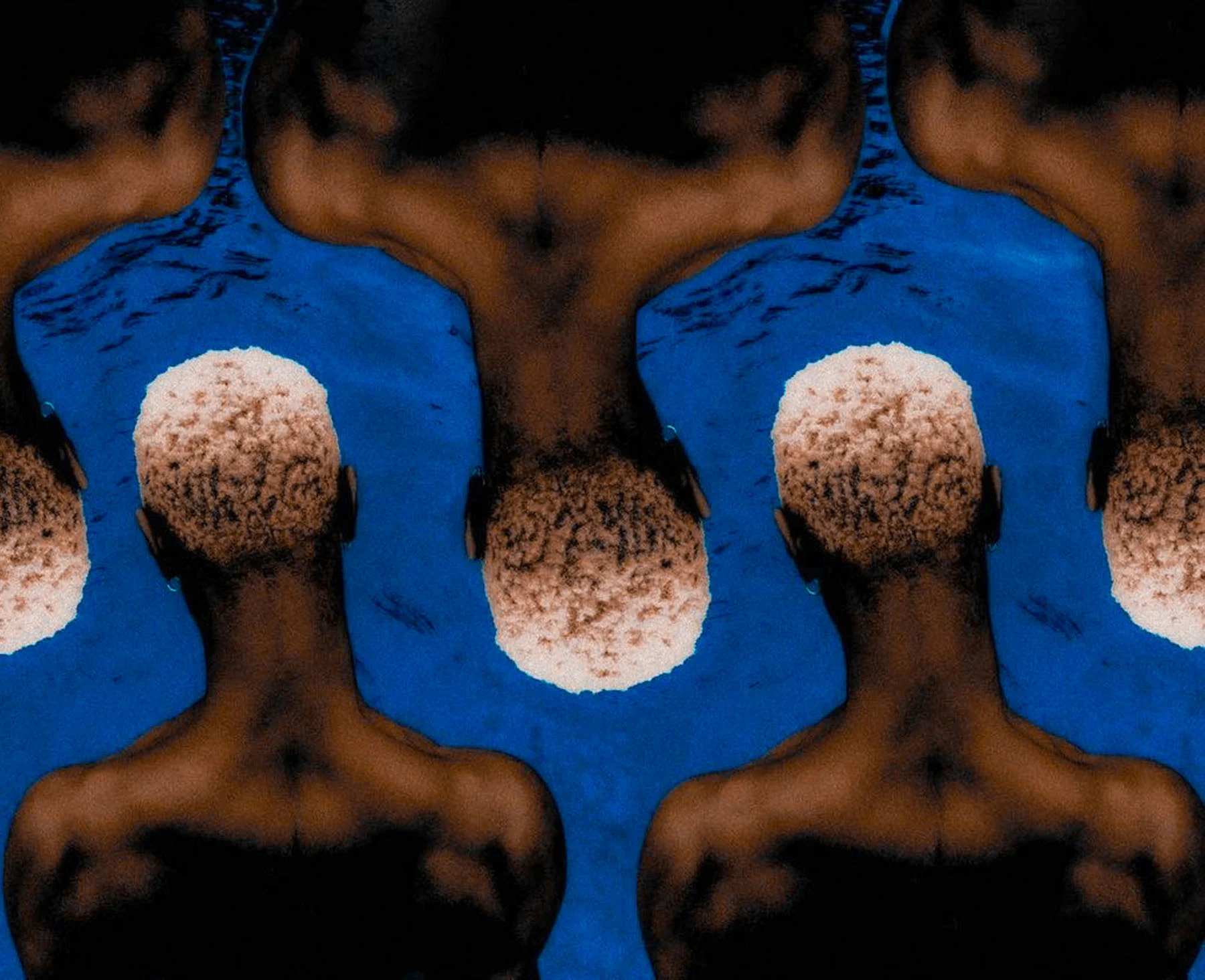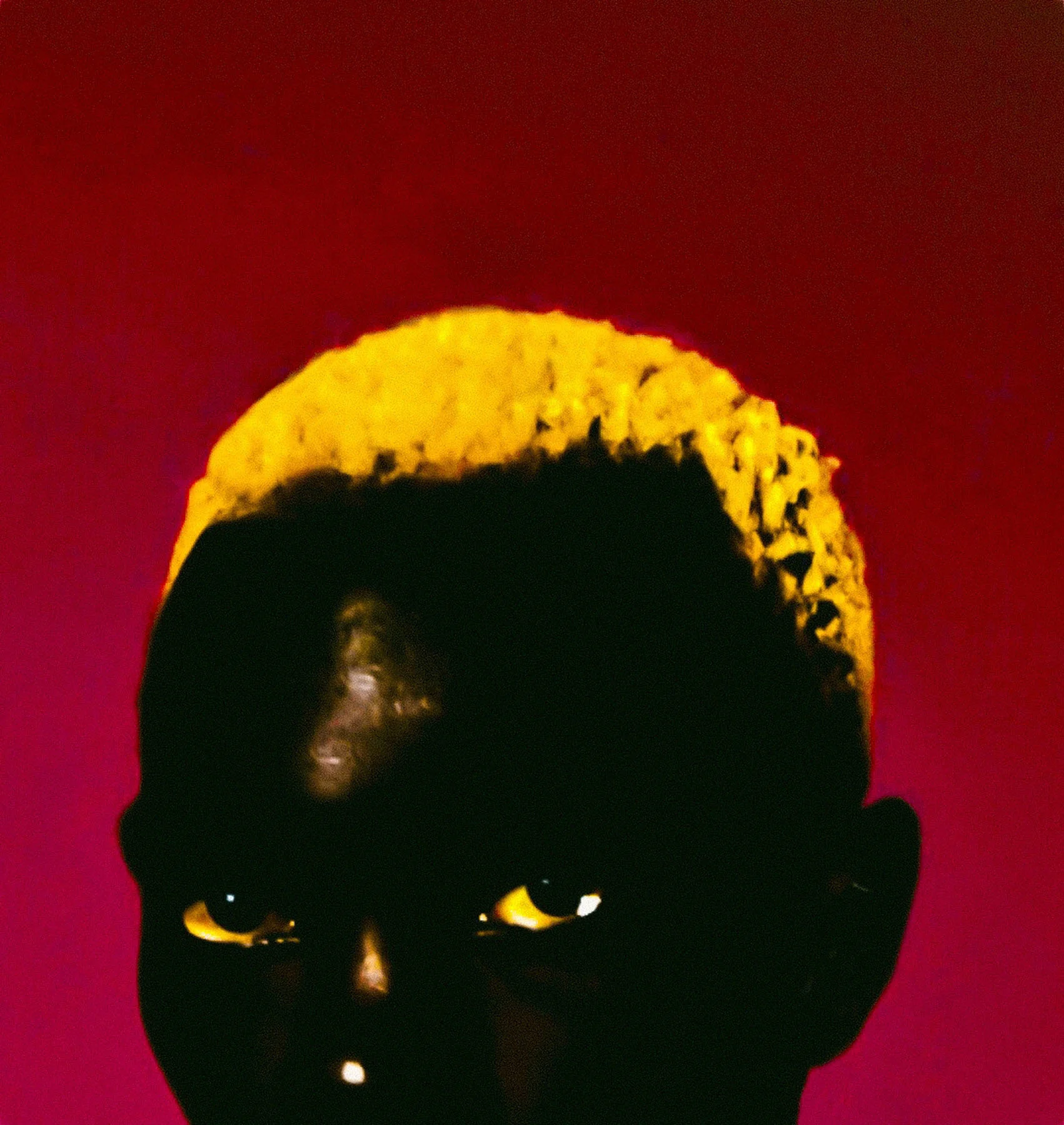

In his mixed media works, Kenyan artist Muyaka Shitanda looks to explore what it means to be human. His subjects become silhouettes as he unpacks the absence of our minds from reality, and faces are multiplied as brooding shadows meet vibrant color, reflecting the duality of the emotions we experience. Shitanda tells Helen Jennings that even though his work is acknowledging the pain of living, his goal is also to look at how vital that pain can be to make us appreciate the good, and to look at how we can process it. “There’s a lot of destroying, tearing or breaking—taking things apart to make a new whole,” he says. “I’m trying to find beauty in the chaos.”

“What would the world look like if everyone had the space to think or imagine or live their life in accordance with their natural mindset?” asks Muyaka Shitanda. “What would beauty look like if society didn’t teach us to dress or act in a certain way? That’s what pushes me. I love adventuring into the unknown.” The Kenyan artist’s multidisciplinary practice takes us there. Steeped in intense colors and touch-me textures, his mercurial beings beckon the viewer into nostalgic realms that invite us to consider the human condition through his bittersweet lens.
I meet this fast-emerging talent at a restaurant in his home city of Nairobi. Having only begun to position himself as an artist in 2020, the quietly spoken, quietly confident 26-year-old has already found representation with Brussels-based Galerie Gomis and exhibited at PhotoVogue Festival in Milan. His initial interest in photography was sparked by sifting through his father’s extensive personal archives. “I was fascinated by these old images of Kenya in the 1970s and 80s—the culture and how people dressed back then was so much more expressive than it is today,” Shitanda says. “Seeing photos of my family in their Sunday best, or at weddings and discos wearing kitenge prints and very structured looks, has influenced my primary aesthetic a lot.” This is felt in his bold palette and in how he often lends his works a distressed, analog finish.


Shitanda chose to study architecture but started playing around with his father’s old cameras and his own Samsung camera phone during university, soon combining photography, collage and painting to develop mixed media works, and more recently experimenting with sculpture, textiles and film. The way he combines these disparate, self-taught techniques reflects his preoccupation with the dualities of emotion. “To know what pleasure is, you have to understand pain. Meshing these opposites together brings about a balance,” he reflects. “A lot of my work revolves around processing pain—what is the grace that comes from grief? So, there’s a lot of destroying, tearing or breaking—taking things apart to make a new whole. I’m trying to find beauty in the chaos.”
This interplay of dualities comes around again through Shitanda’s use of shadow and light, and how humans become silhouettes that meld into animal or natural forms. Often the details are entirely blown out, leaving only the essence of each being behind. Through this process, the mundane becomes surreal and the body acts as “a versatile vessel that can play host to unconstrained perspectives calling on distant memories.” This dialogue around identity is also amplified by Shitanda’s choice of sitters (friends, models, himself) who not only exude a self-possessed calm but also revel in their accentuated Blackness. “I am very drawn to dark skin and want to showcase the beauty we have in this part of the world. I’m intentional about celebrating different bodies and deconstructing stereotypes.”


One of his early series, “The Chorus” (2021), explores the metamorphosis of a butterfly into a woman-like figure as a metaphor for the permutability of identity and embracing change as a positive. “It was a bit of a low time for me during COVID-19. I went for a walk one day to calm down and found a dead butterfly, which I took home and put together with a shot of my friend. And then with each iteration, it became something new. If you consider a butterfly’s journey, flying doesn’t necessarily mean that the air is better than the ground but perseverance will help you get from one place to another,” he explains.
Another series, “Presence and Absence” (2021-22), captures cats in commune with their shadowy masters as an invitation to free our inner selves from social norms. “My intention was to reflect on how our mind and body relate to each other. How do I take time to myself but still make sure I’m not completely detached from reality? Being present physically doesn’t mean you’re present mentally, so often these figures are blacked out, either digitally or by hand, so that they feel somehow absent,” he says. As for their feline friends? “In some coastal communities of Kenya, black cats are believed to be spirits, so if you see one, it could be real or it could be a ghost.”

The next day we meet again to pass through some art spaces including Circle Art Gallery, One-Off Gallery, Kuona Trust and other spots supporting the region’s burgeoning creative community. While West African nations and South Africa tend to dominate the continent’s creative conversation, Shitanda asserts that East Africa is shining too, namechecking fashion designer Iona McCreath of KikoRomeo, visual artist Velma Rosai-Makhandia, curator Sunny Dolat and the 199x collective among his peers. “There are challenges, like getting opportunities for our work to be seen outside, but I’m proud of how we’re all pushing our craft and building each other up. I’d love to get to the point that I could help other artists in Kenya. That’s the goal.”

